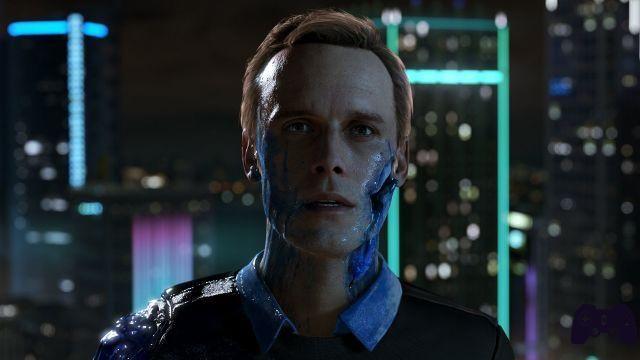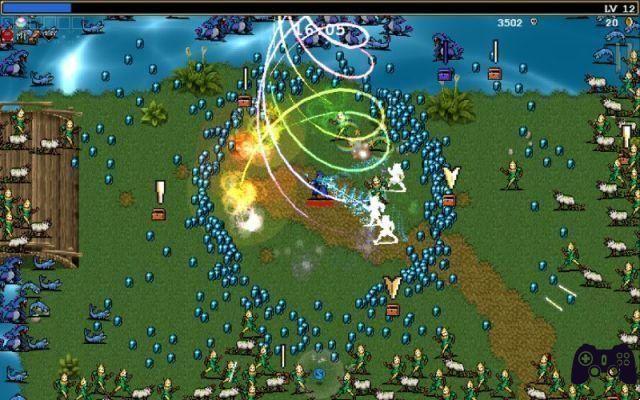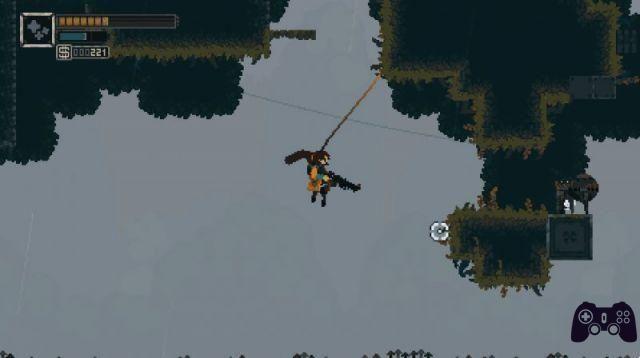The curse that weighed on Star Wars video games has been lifted with the excellent Jedi: Fallen Order, at a time when the quality bar has also been raised thanks to them, the guys at Respawn Entertainment They found themselves faced with an even more difficult challenge: to do better. Survivor arrives after just over two years, directly to PlayStation 5, Xbox Series This time there are no cross-generation versions to justify anything, and a large number of released and future titles with which to compete in a ruthless duel until the last frame. In the meantime, however, the brand has changed. Indeed, the perception that the public, large and small, has of Star Wars has changed: between novels, comics, films and television series that are a little convincing and a little not convincing, it is increasingly difficult to find the right balance and please . all.
In this sense we write this. Star Wars Jedi: Survivor Review dividing ourselves between our love for George Lucas's galaxy far, far away and our love for video games, imagining a formula that could appeal to a potential reader who doesn't necessarily have an interest in the brand. The question, therefore, is only one: Is Star Wars Jedi: Survivor a good adventure video game?
A story far, far away
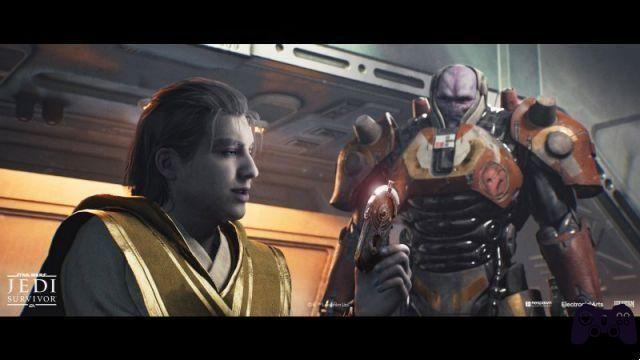
Let's start right away with a guess that will probably reassure players who completed Fallen Order and couldn't wait to find out how it would continue. the story of Cal Kestis and his friends in Stinger Mantis: no, to understand the plot of Survivor it is not necessary to read the prequel novel Battle Scars or binge on books and comics about the High Republic and, if you have forgotten what happened in the first Comeback Title , you can always start the convenient video summary on the main screen of the new game. Of course, it would have been much better to have played Fallen Order firsthand, because Survivor works a lot on the already established characters and the relationships they built in the opening chapter.
On the way, Battle scars It's practically completely ignored by the game's narrative, which merely mentions in passing the accident in which Greez lost an arm, beautifully glossing over the rest of the story.
History is a little different when it comes to notions about the High Republic. For months we've pored over Survivor trailers, speculating that the one-armed man in the bacta vat was a High Republic Jedi based solely on the clothes he wore in one scene. It turns out that the man actually belongs to the High Republic: his name is run the war, and is inadvertently awakened by Cal while exploring ancient ruins in Koboh at the beginning of the game. Gera was a Jedi obsessed with the idea of reaching Tanalorr, a legendary planet hidden in the impassable Koboh Abyss, and therefore rebelled against the Order, which preferred to focus all its attention on the threat of Nihil and the Great Disaster. that was tormenting the galaxy.
Nihil, Great Disaster, Starlight Lighthouse, words that will sound strange to those who have not sunk their claws into the multimedia project ofHigh Republic which Disney and Lucasfilm have been carrying out for some years and which mainly refers to publications in the form of books and comics, but which will soon also reach television with the series The Acolyte. Fortunately, none of them significantly affect the plot and the characterization of the characters, entrusted to cinematography and dialogue that only make vague references to the time of the High Republic. If you want to go deeper, each event or scan enriches the database of information that contextualizes everything better, but remains perfectly insignificant. In this sense, Respawn has done a decent job: on the one hand, it is commendable that we are finally beginning to integrate the High Republic into the general Star Wars imagination; on the other, maybe that's exactly why you have one strange feeling of forcing, as if Lucasfilm had forced director Stig Asmussen to insert the High Republic into the narrative to give it some publicity, but in the end if it had been a different time or any other alien civilization, nothing would have changed. The scriptwriters are also partly to blame, since in our opinion they failed to characterize Gera's character very well.
GeraIn fact, he is the main antagonist of the story. Waking up in an era where the Order no longer exists and an Empire dominates the galaxy, the Jedi decide to resume their search for Tanalorr alongside the Chaos Marauders, a band of nameless thugs who have hijacked Separatist technology, and This explains the presence. of droids dating back to the Clone Wars, and who follows the orders of an armored Gen'Dai named Rayvis. Ironically, a character like Rayvis, who is a sort of henchman with a handful of dialogue, seemed significantly more incisive than Dagan Gera.
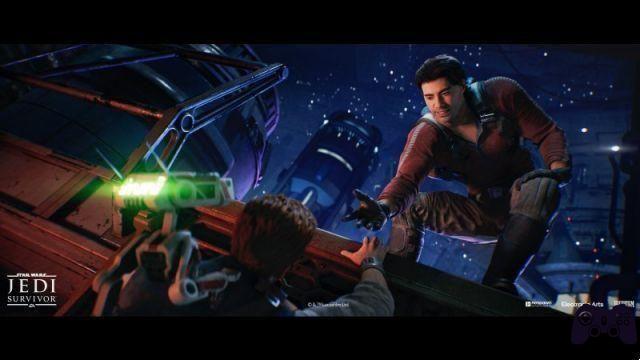
Therefore, the frenetic, but linear, prologue of coruscating and having reached the planet Koboh, Cal Kestis's new adventure progressively slows down, adopting contours reminiscent of those of the previous Fallen Order: following in Gera's footsteps, Cal will explore Koboh and then Jedha in search of some artifacts and along the way he will gather to his old companions as he tries to discover if there is more to his life than fighting the Empire.
Without the Inquisitors to hunt him down again and with the Empire reduced to a secondary antagonist, Survivor feels like a season of The Mandalorian: Cal explores new worlds and cultures alongside his always adorable Baby Yoda. BD-1, while switching from one MacGuffin to another. Moving forward at full speed, without exploring or searching for optional content, Survivor will probably be completed in about twenty five hours. We spent thirty-two of them, dedicating ourselves to a good part of the secondary content and with many others still to be discovered, but if two thirds of the adventure are comparable to The Mandalorian, the last act is much more Andor-style.
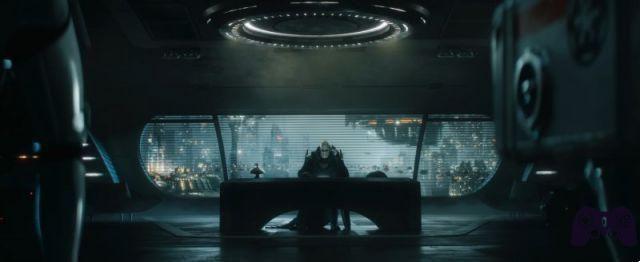
The television comparison may seem risky, but it makes sense. The Mandalorian has always been a fun, fanservice-focused show with a plot that feels like a pretext. The first two acts of Survivor do exactly the same thing. Andor, on the other hand, has won favor with critics and audiences for a level of writing that abandons space fantasy fairy tale stereotypes to embrace a mature and concrete narrative: We just described the last act of Survivor.
In fact, at a certain moment in the adventure, the narrative takes a sudden impulse and the themes so dear to Star Wars that were missing in the first hours, to give way to a more contained and limited story, come back strongly to the foreground in an exciting roller coaster that drags up to a excellent epilogue, open and closed at the same time. We especially appreciate the more mature and human perspective, as well as the importance dedicated to introspection and the relationships that the characters have built over the course of two games, and that make every moment in their company decidedly special: Greez, Merrin, Cere and especially newcomer Bode Akuna are credible and convincing supporting actors. The credit also goes to Spanish dubbing, truly magnificent in every way., and the music of Stephen Barton, which evokes, and sometimes uses, the very famous scores of John Williams without missing a beat.
Improved gameplay of Star Wars Jedi: Survivor
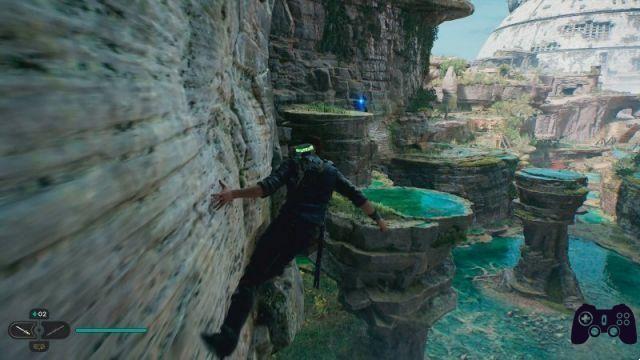
It is undeniable that Survivor is very similar to its predecessor and from the first lines you have the feeling of being in front of a Fallen Order 2.0, which at least demonstrates the attention that Respawn has dedicated to the comments of players and critics. Coruscant's prologue is a remix of Bracca's in Fallen Order, with Cal immersed in a frantic race between enemies and platforms that acts as a tutorial and teaches the rudiments of game. There's just one small difference: Cal starts Survivor with all skills learned over the course of Fallen Order: Force powers, wall running, Jedi somersault, etc.; Survivor mixes everything in the first minutes of the game, gradually proposing increasingly complex challenges and, at the same time, providing our hero with a new tool: the lifting cable - which makes exploration even more dynamic and complex.
However, Coruscant remains a very linear introductory stage that also represents a showcase of what awaits us during the new adventure: it is not surprising, therefore, that it also comes to help us. Bode Akuna, a jetpack-wielding gunslinger that Respawn created for Survivor.
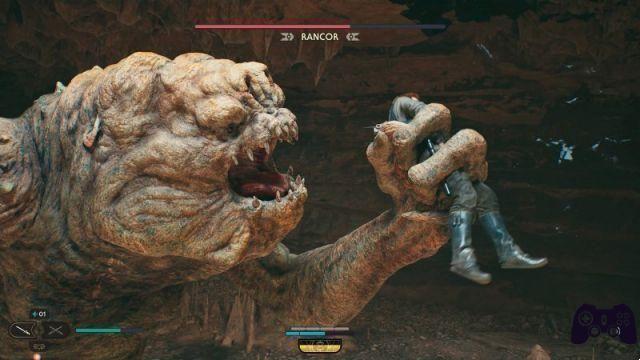
The game gives us a minimal control over your battle partner, but it's just an illusion: in reality we can only tell secondary characters like Bode which target to hit with a special attack or which target to hit to unlock a new path. Bode and Merrin will help us at specific moments in the campaign and in that sense the dynamics that the game requires. Companion assistance is perhaps the one that has changed the least compared to Fallen Order: we must admit that we would have liked to choose who to take with us, when and perhaps even in any situation, but the script at least justifies the coming and going of the characters. companions to force Cal, and us with him, to fend for themselves in the exploration.
This latest aspect of Star Wars Jedi has been greatly improved in every way, and you'll be able to notice it as soon as you get to it. stupid and the first steps are taken in this kind of open world that is not really an open world: it is rather a gigantic, immense map, structured in meitrodvania that guarantees the player the freedom to go wherever they want from the beginning. It's inevitable that you'll run into a wall you can't cross or look longingly at a platform that's too far away, but as time goes by, following the main mission, you'll unlock the skills and tools necessary to overcome each obstacle. : you just have to find them again.
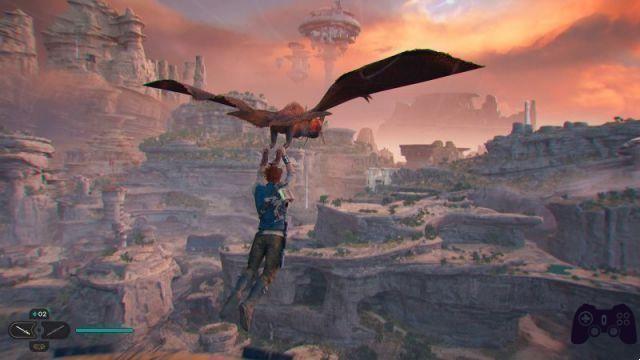
In this sense, Survivor offers the player two extraordinary features. The first is the map, which has been significantly improved compared to Fallen Order: it is now clearer and more readable, and Respawn has enriched it with filters and options, but above all it accurately records each collectible, passage or puzzle, whether accessible or not. . The other feature that literally changes the focus and, in a way, underlines the quality of the level design, is the fast travel. Accessible from the save points, it allows you to move from one to the other with little load, and the Californian developer has taken care to distribute collectibles, puzzles and everything else always near these stations: therefore, the backtracking is reduced to a minimum, Despite being inherent to the nature of this type of game, and retracing your steps is always a pleasure because the skills learned in the meantime open the doors to always new and interesting paths, challenges and rewards.
L'exploration So it's the beating heart of Survivor, if only because Respawn's game always offers great reasons to snoop around. If in Fallen Order the collectibles were limited to the different types of ponchos or the components to customize BD-1 and Cal's lightsaber, this time there is much more to collect and each detour leads to something or someone.
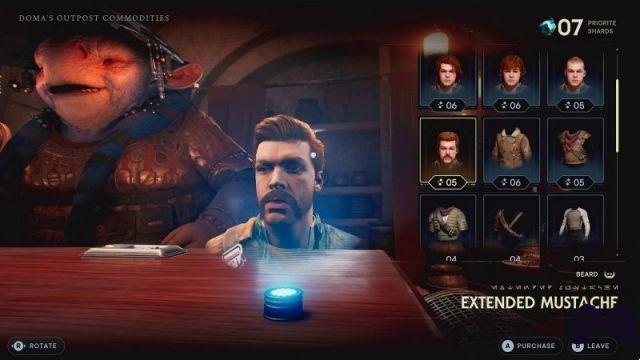
Koboh is a nexus of the galaxy that is the envy of Tatooine and Jakku. You'll find everything from Separatist droids that have been isolated for years to Jawa scrapyards, Rancors, Jedi ruins, and Imperial outposts. It is a planet with enormous geographical diversity that includes ravines, crevasses, mountains and forested areas, lakes and swamps, volcanic lands and flying fortresses. It's no coincidence that Greez opened his Pyloon Saloon right at the outpost of Metapromesa, a place where some colorful personalities meet.
These NPCs frequent our friend Latero's tavern or wander around the buildings, and in some cases they will give us advice that the game asks for. Voices: They are, essentially, the secondary objectives that appear on the map and tell us that we could find something interesting in that area. The freedom that Koboh's open structure grants, however, allows us to go to a certain location and solve the secondary task before even having spoken to the NPC: in that case, Cal will make sure to inform the NPC that the objective has already been reached. has achieved. . The rumors are not real. side missions; They mainly fall into the realm of hints and do not reward the player with tools or experience points.
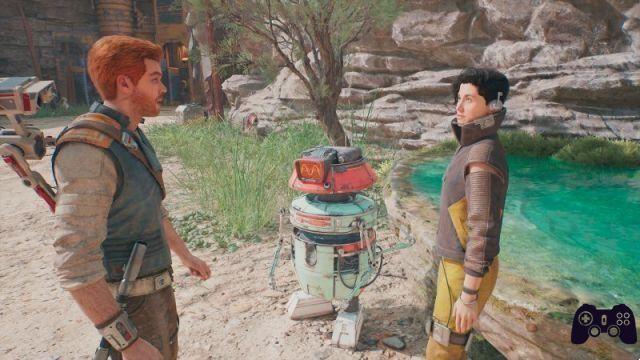
In some cases, however, resolving a Voice can guarantee us respect for the NPC in question that we will effectively "recruit" in the Hall: there it is always worth chatting with the patrons, who will react to the evolution of the campaign. and maybe it will have some new voices for us. Some will unlock additional features like the jukebox, rooftop garden, full aquarium, or mini-game.holotactic which uses a Pokémon-style trick: it's a kind of turn-based strategy game, but the pawns are the enemies we had scanned with BD-1 after defeating them.
The sellers then offer various goods in exchange for details. roll that Respawn has positioned more or less prominently on the Survivor planets: we go from additional components for the lightsaber or BD-1 to new clothing for Cal, which can even be customized in terms of hairstyle and beard cutting, but also benefits and other improvements. . Caij, the bounty hunter, will offer us additional properties for our blaster in exchange for mini boss - increasingly challenging - that will send us to defeat throughout the galaxy. Each of these NPCs has a strong narrative background that we'll discover through regular discussion that may not have relevance to the grand design of Star Wars, but certainly demonstrates an important level of in-depth analysis.
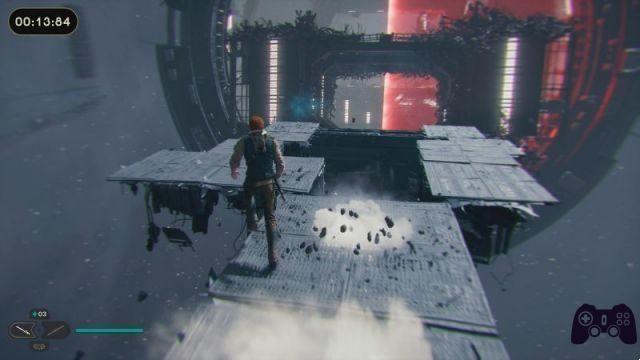
If all the Survivor planets had been like Koboh, we probably would have been looking at an even higher caliber title. Unfortunately, however, I free exploration worlds There are only two: Koboh, actually, and Jedha, which however is even smaller. Aside from these two planets and Coruscant, Cal visits a couple more places that we don't want to reveal, but they are mostly limited and linear settings. The ingenious and timely shortcut system allows you to revisit them at any time and explore them for collectibles that we haven't collected, but they are still ultimately traditional settings. The geographical variety of Koboh somewhat compensates for the lack of explorable planets, but there is still the feeling that Cal Kestis's new adventure is limited to a specific space, which curbs his ambitions.
Despite this, you cannot turn a blind eye to such an inspired design. Each new skill or tool fits perfectly into the exploration dynamics and map structure, combining naturally with previously learned skills, and although the number at the end of the game is impressive, you never get the feeling that Respawn wants to go overboard: even the timed challenges , called Force Rifts, which test the player's platforming skills, always seem balanced and never banal or unfair, thanks also to a revised and corrected control system which immediately seems much more intuitive.
lightsabers and fighting
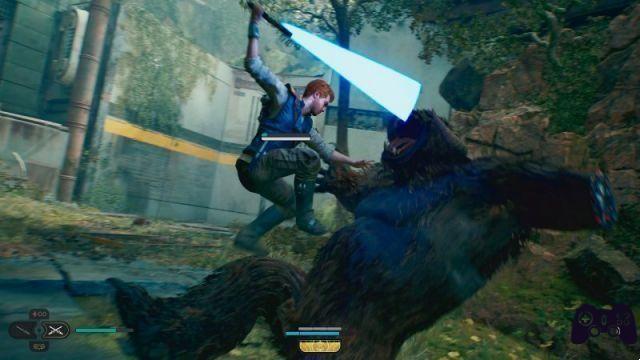
Finally, Survivor wouldn't be a Star Wars Jedi if there weren't fights. This is undoubtedly the aspect of the game that has changed the most and the least, a statement that may seem like a contradiction even though it is not, and we will soon explain why. We start from the assumption that the combat system, in essence, has remained almost unchanged: it once again focuses on a mechanism of precise exchanges and parries that reduce the opponent's block gauge to the point of unbalance, guaranteeing an opportunity to attack. Therefore, it is important to learn to read enemy animations to predict their attacks and deflect them at the right time, in order to break their defenses and destroy them in a few shots.
When surrounded by melee and ranged enemies, you can also resort to dodging in all directions, which, done perfectly, also recharges Cal's Strength gauge. Alternatively, you can keep your guard up to stop entire combos, but you run the risk of faltering like the enemy would and taking more damage than necessary; For this reason, there are a large number of force powers that Cal can use to gain the advantage in combat, from telekinesis that can pull or push enemies, to mind control that allows him to temporarily pit them against each other.
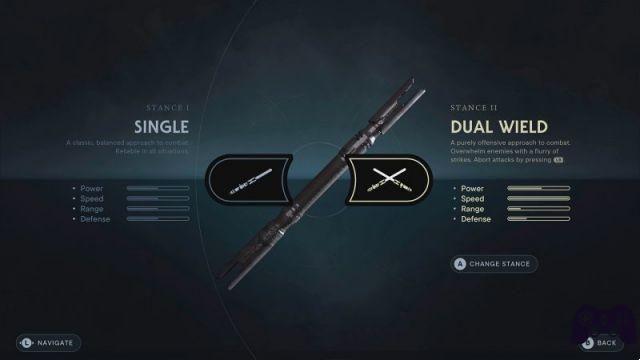
Fallen Order's combat system was already good in itself, but it lacked Cal's responsiveness to respond to player input that instant later, potentially making the difference between a perfect parry and a botched hit. It is not surprising that Respawn had implemented a brilliant difficulty selector which was not limited to increasing or decreasing the strength of the enemies, but also the response time, allowing even players less accustomed to action titles to make the dynamics of the confrontations their own, particularly spectacular in the duels with bosses armed with lightsabers. Well, in Survivor not only does the aforementioned difficulty dial return, but Respawn has also adjusted timing and reactivity to inputs, simultaneously balancing Force powers that in the first title could be used to literally overpower enemies.
Let's be clear, Force powers are also devastating in Survivor, but there are a lot of them and Respawn has designed the matchups by mixing Force Resistant Enemies with others that can even turn it against us: there are enemies that we can attract with the Force and put to the sword in an instant, and others that at the moment of the final blow will take advantage of the momentum to kick us and restart the battle. .
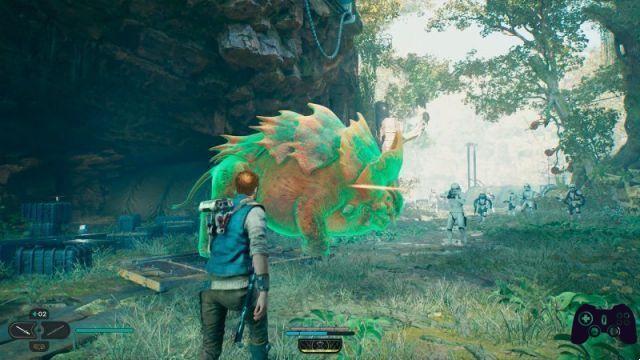
It is still possible to abuse Force powers, but you have to "build" Cal specifically, distributing the Skill points in the appropriate skill trees. Now there are many more to be developed: one dedicated to Resilience, three focused on Force powers, five on lightsaber techniques. Another important innovation is, in fact, the styles, which however influence the combat less than one might think. Cal can equip two styles at once from the start, thus switching between the single-bladed lightsaber and the double-bladed lightsaber. Over time, three other fighting styles are learned: the two-sword style, agile and aggressive; the slow and powerful of the cross sword; finally, the new one that combines a lightsaber and a blaster to give Cal an advantage in ranged battles.
Each style has specific combos and special attacks to unlock and develop, but there really is no one better than the others and at the intermediate difficulty level you can approach any fight with the styles you prefer. However, as you raise the difficulty bar, it becomes much more important to choose the most effective style depending on the enemies you are going to fight, compensating for their weaknesses with benefits, new to Survivor.
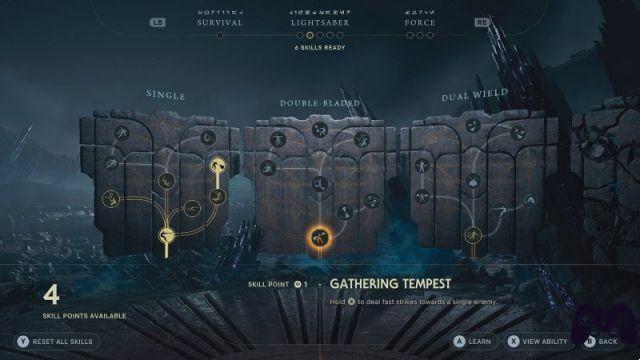
They can be unlocked in the usual way: you can buy them from the Zeta droid or find them lying around, well hidden, perhaps in Jedi Chambers After solving complicated puzzles, Perks are essentially bonuses that Cal can equip to alter the game in a more or less marked way. There are Perks that simply increase the damage that certain weapons or abilities deal, while others are ambivalent and for example increase the damage dealt to the enemy's block gauge, but reduce the time available to parry. Each Benefit occupies one or more specific spaces, so it is not possible to equip them all and you have to choose, or increase the number of available spaces by searching for them on the explorable planets.
Between Force powers, lightsaber styles and Perks, the Star Wars Jedi combat system, as we said, has not changed significantly, but it has improved in all aspects. Perhaps it remains the least revolutionized component of Respawn's title compared to Fallen Order, but also the one that the Sherman Oaks developer has spectacularized the most, working on the animations with an eye toward the depiction of combat in Star Wars films and animated series. A detail that fans surely won't miss, while less passionate fans can't help but get excited when they take out a particularly annoying Imperial stormtrooper by reflecting their own blaster shot in his face.
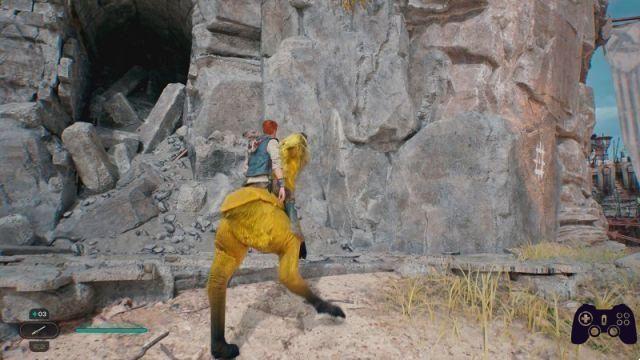
Speaking of animations, we must admit that we were surprised by the return of mutilations which were conspicuously absent in Fallen Order. There's not a single drop of blood, of course, but Cal's blows decapitate his opponents, whether human or bionic, and sever limbs left and right, not to mention some finishing blows that are, to say the least, not very brutal. It's probably an aspect Respawn has chosen to focus on to underscore Cal's transition into adulthood, thrust against his will into an era where he can't afford to be brave as he fights to stay alive in a galaxy that persecutes. And while some moves were still a little awkward, in the end the guys at Respawn worked on some animations, saving us from the infamous "diaper effect" that plagued Cal's jogs in the trailers.
We'd love to say that the entire game was polished this way, but that wouldn't be entirely honest. Respawn has anticipated the release of a corrective update aimed at stabilizing performance: we downloaded and tested it after finishing the game, and we must admit that the situation has improved significantly, but our thirty-odd hours of testing were plagued by frequent slowdowns. and instability even when playing Performance mode, a setting that reduces the resolution to 1440p to guarantee 60 frames per second.
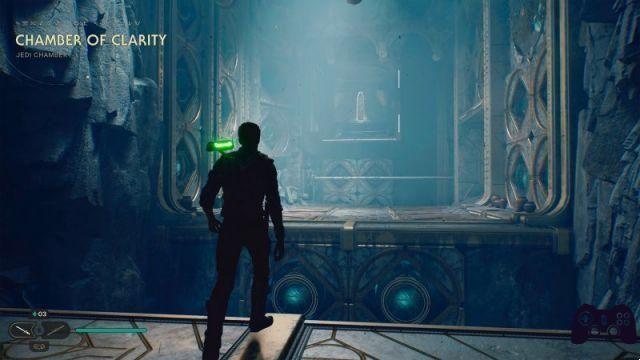
While the issue was apparently resolved, or at least fixed, it's hard to say if the update also fixed the many bugs we encountered, including some annoying crashes. No one broke the game, thankfully, or ruined the automatic saves, but between crazy hair, sizzling textures, and awkward transitions between gameplay and cutscenes, Star Wars Jedi: Survivor felt like code to us. less refined than we would have liked. It's a shame, especially since Respawn always proves it. art direction to spare, with a particular sensitivity to the choice of actors and the staging that makes you want to reproduce some particularly memorable campaign sequences, such as the siege of Jedha or the raid on Nova Garon.
And playing Survivor again would make sense: completing the campaign also unlocks a mode New trip + which allows you to restart the story by importing all the Skill Points, styles and collectibles unlocked in the first game, along with some very particular Perks and two special colors for the lightsaber.
Conclusions
Tested version PlayStation 5 digital delivery PlayStation Store Price 79,99 € Holygamerz.com 8.5 Readers (63) 7.5 your voteImproved in every way compared to Fallen Order, Star Wars Jedi: Survivor is not only an exemplary sequel, but also an excellent action-adventure title in all aspects. Respawn has literally outdone itself in terms of level design, creating a hybrid game that builds on Metroidvania lore with an open-world twist and an even more robust combat system. It's a shame that the plot takes several hours to take off, reaching its peak only in the final lines: except for several graphical problems that Asmussen's team promised to solve, Survivor is the Star Wars video game that we expected and that we are a little disappointed because we deserved it.
PRO
- Sublime level design especially on the planet Koboh.
- The last hours of the adventure are truly impressive.
- The combat system is even more solid and varied.
AGAINST
- The bland antagonist weakens most of the campaign.
- Frequent graphical glitches that Respawn promised to fix through patches
- Few planets, of which only two are "open"




